Sport and action photographer, Gabriele Facciotti, began his photography story with his father’s reflex camera. Now, he talks to IMAGO about his passion for the art form and cycling in equal measure. Read his conversations with miniature cyclist enthusiast and artist, Corrado.
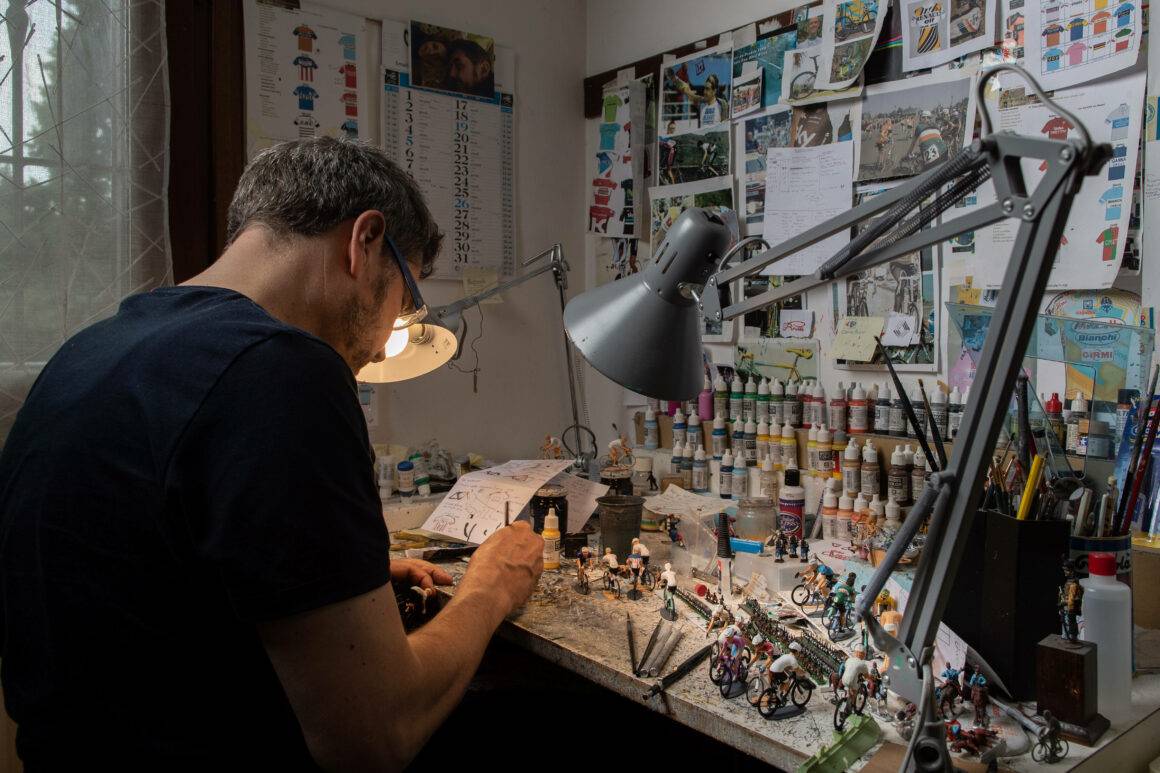
What is Life Without the Bicycle? by Gabriele Facciotti
By Gabriele Facciotti.
Perhaps, if I hadn’t fallen in love with cycling, I wouldn’t be in front of this blank sheet of paper writing this story today. Maybe I wouldn’t have become a photographer and most probably I wouldn’t have met Corrado.
I started photographing for the love of cycling. I used to go to see some of the stages of the Giro, the Tour and I liked to take my camera with me. Making it a profession however, was never in my thoughts. One day I received some compliments a little more authoritative than those of my mother and aunt. I took courage and, thanks to a job that no longer satisfied me, I gave up everything to dedicate myself to photography.
I gave up everything to dedicate myself to photography.
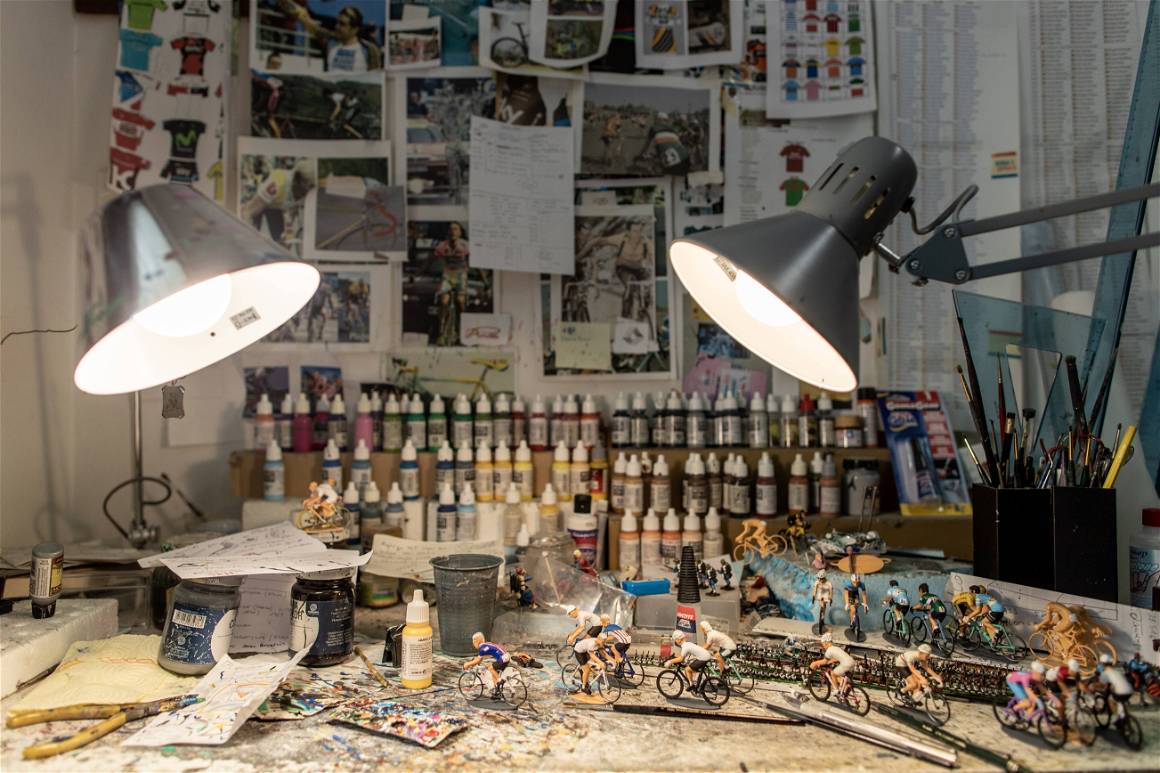
Bit by bit I managed to carve out a little space in the world of sports photography for myself.
This year I was finally going to follow the whole Giro d’Italia. The one that when I was 6-7 years old, kept me glued to the television for hours on end after school and I would watch without understanding much about what was happening. But the voice of Adriano Dezzan kidnapped me. His way of telling didn’t leave space for anything else, it left no room for anything else in my head.
After many efforts, sacrifices, thoughts, phone calls, emails, this would have been the year of my tour. But then came the virus, the quarantine, the masks …. Slowly everything stopped and even the tour was cancelled. Postponed, we hope.
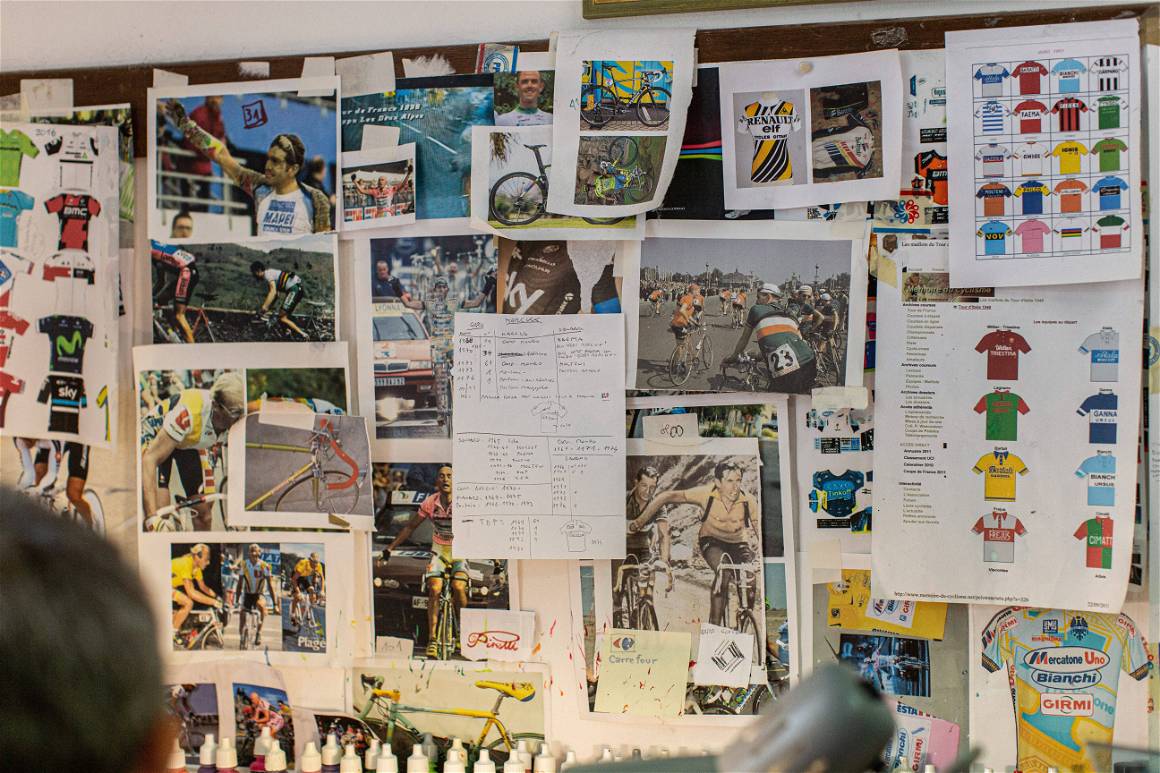
Locked in the house, like many, I felt a very strong nostalgia for my work, and for my daily life. So I started to fantasize, to bring out memories related to cycling, the stages seen with friends, those photographed for work, the time spent waiting on the road, the time spent pedaling.
In this climate, I do not know how and why, but I found myself searching on google “model cyclists”, “miniature cyclists” … I wanted to find a way to still photograph cycling, to feel that emotion that I felt the first time when I stood at the side of the road waiting for the riders to pass by.
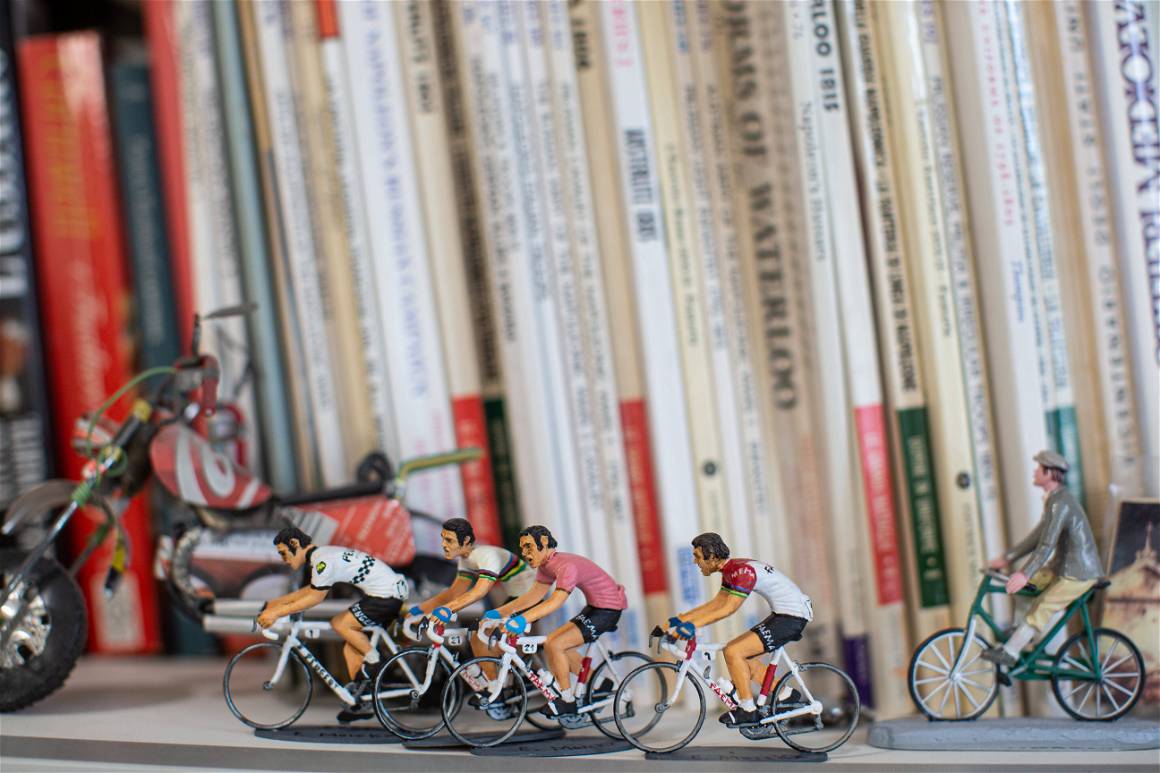
Between a google result and a friend’s suggestion, I found myself with Corrado’s phone number.
The phone call is particular: “Hello, I got the number from a friend, a journalist. I am a photographer and I would like to simulate the stages of great turns with your models. Would you have any to send me?” Corrado seemed misplaced, “Yes, but do I have to pay something?”
We arranged it and a few days later I got 20 miniature cyclists. I locked myself in the studio and finally began photographing cycling again, right in the first days of May, when I should have been at the Giro.
It was strange, but very intense. I sent the photos to Corrado who seemed to appreciate the overall outcome. I thought about it for some time and decided to return them to him in person, giving me the opportunity to take some photographs, ask some questions, to see where he works and how his cyclists are born.

Living in the countryside of the province of Mantua, Corrado’s home is surrounded by beautiful roads and you can’t help but think of the bicycle. As I traveled, I asked myself if he ever “goes by bicycle and if he has ever passed through here”.
I arrive, I park, I get off and the stifling heat destroys all my romantic-cycling thoughts. The heat, a glass of water… I’m very curious.

Corrado used to ride a bicycle when he was a kid, a bit like many people now do Judo, Basketball or Soccer; he rode a bicycle. He told me that he hated cleaning it, but that his idol was Moser. He watched the races on television and had “La Domenica Sportiva”, a collection of Clementoni games dedicated to the most popular sports of the late 70’s. It had contained some plastic miniatures with which Corrado tried to emulate the gestures of cyclists and champions of the time.
Corrado’s interest in cycling was never really dormant and returned to him after his once favourite game spent some years in a box in the basement. His interest and passion in particular, for vintage cycling.
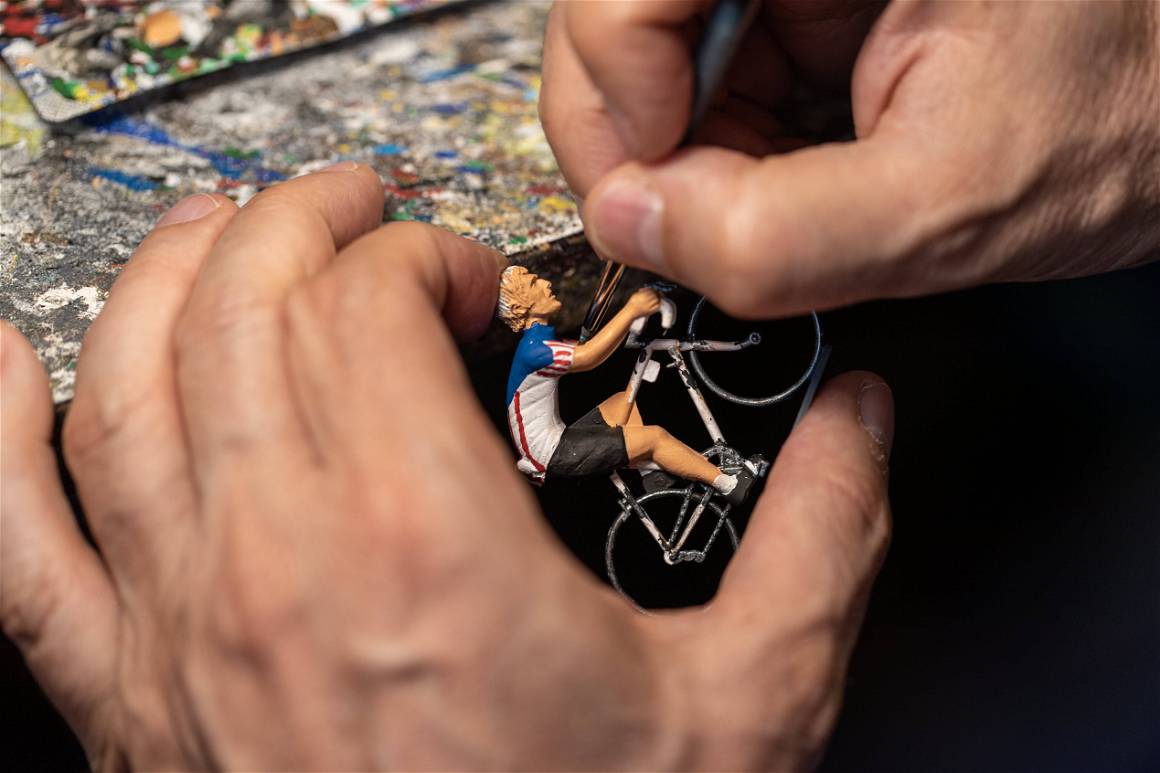
Alongside cycling, Corrado was too in fact a history fanatic, and took particular interest in the period from Napoleon to the Second World War, making miniatures of the protagonists of those events.
His love for the past, paired with sport soon led him to be passionate about the world of cycling in another light, focusing on historical bicycles and the woolen jerseys of epic cycling.
Exploring this in his craft, his childhood experience of the “Domenica Sportiva” returned to the surface and he began looking for information on miniatures, models, toys… Much like I had done before ending up with his phone number in my hand.
In 2011, Corrado discovered a craftsman in France who made neutral miniatures of cyclists.
He purchased a dozen and began to paint them.
In Parma, at a lunch for an association for historical cycling, Corrado took with him his models and upon showing them to his fellow diners, realised their enthusiasm for the crafts.
At that time Corrado was a surveyor, but with his passion and others interest, he left his job in 2012 and since then hasn’t looked back. Receiving orders from collectors, enthusiasts, fans, and excitingly, relatives of riders including; Elia Viviani’s Mother, Letizia Paternoster’s Mother, Paternoster’s Son, Giuseppe Martinelli’s son, and Mother of the Bonifazio brothers.

The research behind Corrado’s work is amazing. Talking to me, I understood why he insisted so much on the coherence between the various miniatures. I wanted to have at least 20 of them and he told me that he only had the 60’s available. Wanting to perhaps add cyclists from the 50’s to my collection, his meticulous nature was confused by the idea of mixing the decades. That is when I understood.
Corrado studies golden albums and period classifications. His comprehensive knowledge on elements from the styles and fashions of each era are striking.
“In the 20’s the sponsors were at the bottom of the jerseys. You know why? Because the cyclists had the tires on them.”
“In the 1930s the socks were all black, by regulation.”
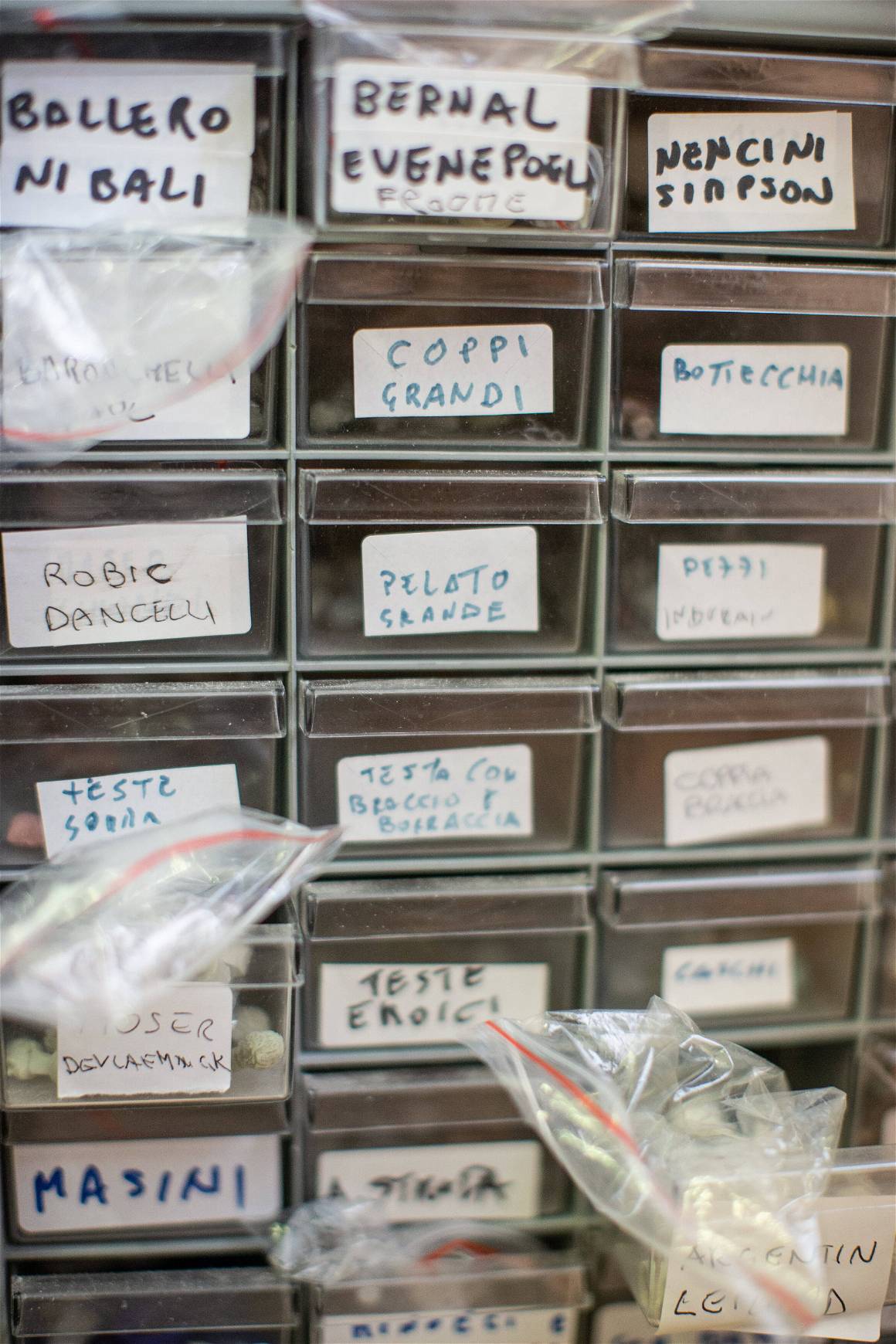
Among all his tools, boxes, paints and drawings is a small chest of drawers. On each one there is a name: Pantani, Coppi, Bartali, Bernal, Bottecchia….
“When I have to paint a cyclist, I hunt for information about his life. For me it’s like giving him life again and knowing what bike he used, knowing his history, his vicissitudes, it’s essential.”
I realized how much “bicycle” there is to Corrado’s story. One can tell purely by the passion that shines in his eyes when he talks about his work and the path that brought him there.
By the drawings of the jerseys of the different vintages, scattered on the table, with all the sponsor-related directions. By the sight of him working, immersed in his space; without him it looked messy, but with him, it had purpose and meaning.
A collection of water bottles from various teams caught my eye. Who among us has not at least once hoped for a race trophy? Who hasn’t hoped to receive a water bottle from a runner, exhausted at the finish line. Corrado had a nice string of them, resting on a shelf, next to books of Napoleon and miniatures of Coppi, between a volume on the uniforms of Waterloo and Learco Guerra (a Mantuan like Corrado) standing on his pedals.
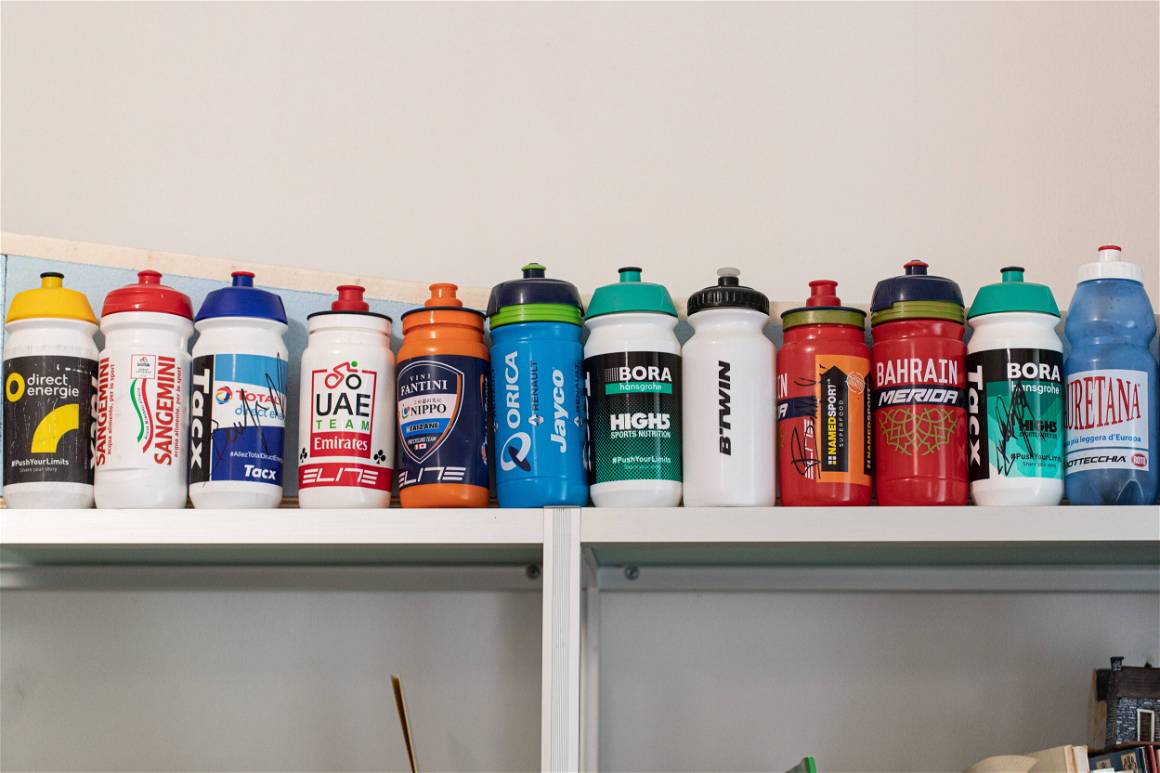
Finishing our meet, we drank a chinotto, I tasted a dolcetto made by his girlfriend and I was on my way again.
I kept a miniature. A man from the Vov, ’61 team. I don’t know if it’s anyone in particular, I didn’t ask. But, swayed by Corrado, I went hunting for information. My guess is that it is Pasquale Fornara, class of 1925, from Borgomanero, known as the “Swiss”.
Gabriele Facciotti is a sports photographer based in Italy and NEW partner with IMAGO. The words and images featured are his own from his “CORRADO” series.


